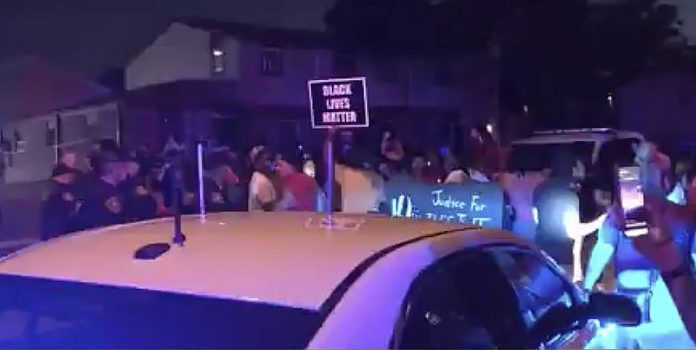(Ken Silva, Headline USA) A federal judge has allowed the FBI to keep secret the aerial surveillance footage it took of the August 2020 riots in Kenosha, Wisconsin—where Kyle Rittenhouse shot three protestors who had attacked him, killing two of them.
U.S. District Judge James Boasberg’s Thursday-afternoon decision stems from a lawsuit Gun Owners of America filed against the FBI in 2022, demanding footage of the Kenosha riots.
Thus far, the FBI has only released an 83-second clip of the aerial surveillance video also played at the Rittenhouse’s trial. The FBI has withheld the rest of the footage on the grounds that the Freedom of Information Act allows government to withhold records if producing them “would disclose techniques and procedures for law enforcement investigations or prosecutions.”
During the FOIA litigation against Gun Owners of America, an FBI official insisted that releasing aerial surveillance would jeopardize details about the FBI’s surveillance program unknown to the public—including the “dates, times and locations chosen for surveillance” and the specific areas where the FBI chose to focus and zoom in on.
The FBI official claimed that non-public video could also be combined with publicly available information to identify FBI surveillance aircraft, thus allowing “adversaries to ascertain the fuel capacities of the aircraft” and the “surveillance camera capabilities.”
“Disclosure of the FBI surveillance-program practices, moreover, would be reasonably expected to risk circumvention of the law. Criminal and national-security adversaries could use the non-public information to adjust their behaviors and avoid aerial surveillance,” the judge added.
“They could also use aircraft tail numbers and information about fuel capacities and surveillance-camera capabilities to track FBI surveillance and avoid detection.”
Accordingly, Judge Boasberg granted the FBI a summary judgment against Gun Owners of America and allowed the bureau to keep its Kenosha surveillance footage secret.
The FBI’s Kenosha surveillance arose as an issue in November 2021 during Rittenhouse’s murder trial, in which he was exonerated. At the time, the Daily Caller reported on allegations that the FBI had withheld high quality footage of the Kenosha riots from Rittenhouse’s defense attorneys.
The Milwaukee Journal-Sentinel also reported at the time that FBI technician Brandon Cramin testified he was “in an airplane 8,500 feet above downtown Kenosha on Aug. 25, 2020 taking video with a special infrared camera.”
The Sentinel also reported that defense attorney Mark Richards complained in court that the FBI had “rebuffed [the defense’s] attempts to access the rest of the video, at one point telling them it no longer exists.”
According to the New York Post, jurors in Rittenhouse’s trial were finally “shown new FBI drone footage of the close-range shooting” after prosecutors, who “had previously obtained a low resolution copy of the footage,” received “the enhanced version” last week.
Ken Silva is a staff writer at Headline USA. Follow him at twitter.com/jd_cashless.

